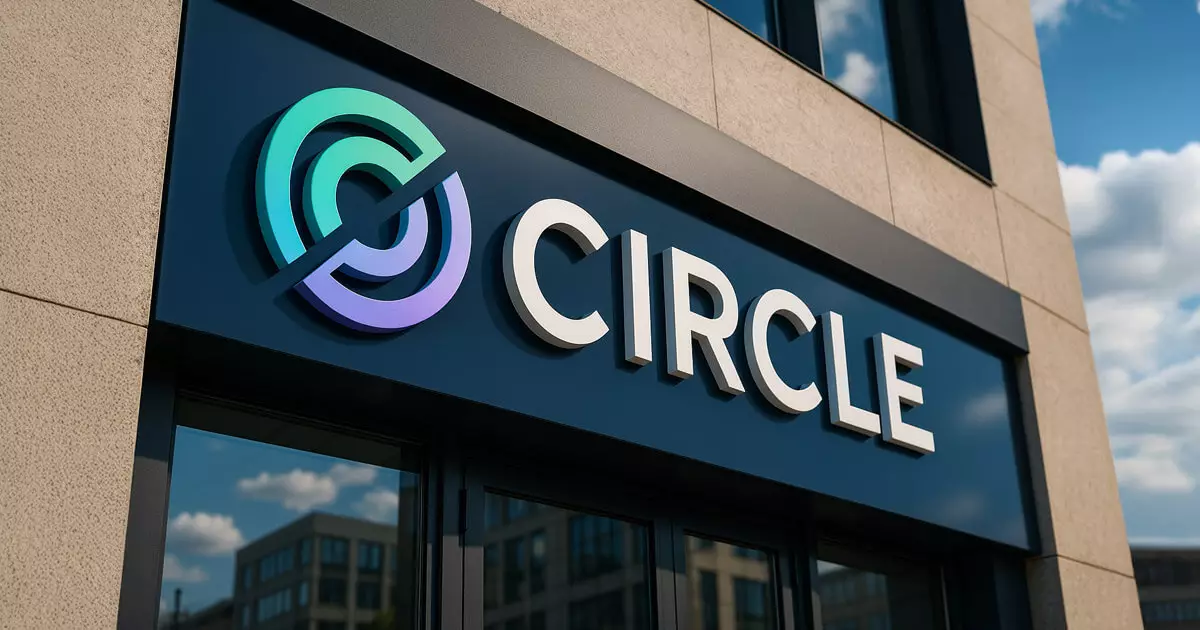Circle, the maker of the USDC stablecoin, is at a pivotal moment in its history. Initially targeting a $5 billion valuation with the announcement of an upcoming initial public offering (IPO), the company is now exploring another significant route: a potential acquisition either by Coinbase or Ripple. This dual approach reflects the precarious balance that tech companies often strive for—between maintaining independence and seeking the capital and security that comes from being part of a larger organization. While the initial public offering could have allowed Circle to soar into the public spotlight, the looming possibility of acquisition brings both intriguing prospects and fears of losing its autonomy.
The IPO process has never been a straightforward path. It entails rigorous due diligence, significant costs, and the constant scrutiny of regulators and market stakeholders. For companies in the high-stakes world of cryptocurrency, which already faces regulatory challenges, the IPO route could seem daunting. Circle’s decision to press ahead, despite the exploratory nature of acquisition discussions, illustrates a calculated risk. They are not merely hedging their options but rather laying the groundwork for a multifaceted approach to growth.
Partnership Questions: The Coinbase Factor
The relationship between Circle and Coinbase is complex and perhaps more intimate than many understand. As original co-governors of the USDC stablecoin ecosystem, their bond has shifted notably since the dissolution of that governance structure in 2023. Despite functioning independently now, the deep-rooted financial agreements between them raise questions about true independence. Coinbase not only benefits from a revenue-sharing model with Circle but also possesses substantial leverage over any future major moves that Circle might want to undertake.
This dependency could hinder Circle’s ability to capitalize fully on its stablecoin’s potential by locking it into a partnership that favors Coinbase. The very stipulations that limit Circle’s capacity to forge significant partnerships without Coinbase’s consent suggests the two companies operate as if they were married, and divorce does not seem to be in their near-future plans. If Coinbase expresses a desire to assume ownership of Circle, as insiders predict, it would be hard for Circle to refuse. This would represent a strategic move rather than a complete loss of identity, but what does such a merger imply for the broader cryptocurrency ecosystem? Would it dilute competition, or enhance innovation?
Ripple’s Ambitions: A Fractured Market Landscape
Alternatively, there’s Ripple—a contender that issued a bid reportedly worth between $4 billion and $5 billion for Circle. While initially rejected due to being deemed too low, Ripple’s interest underscores the willingness of major players to consolidate their position in the turbulent waters of cryptocurrency. Ripple’s burgeoning interest highlights its continued adaptation and acquisition strategy as it aims to position itself favorably in the market landscape.
However, the dynamics of Ripple’s offer raise intriguing questions. The mix of cash and XRP could serve as a double-edged sword. On one hand, it showcases Ripple’s desire to leverage its substantial XRP holdings; on the other hand, that variability exposes Circle to the whims of a volatile asset. Given Ripple’s recent acquisition spree, moving towards a partnership with them could offer a different style of expansion—but at what cost to Circle’s own vision?
Future-Proofing Through Strategic Alliances
Circle finds itself at a crossroads where future-proofing becomes paramount. While crypto giants like Coinbase and Ripple present enticing growth opportunities, the vision of staying autonomous while maximizing potential is undoubtedly daunting. The stakes are high; the stablecoin market remains volatile, and competition is fierce. As entities like Coinbase and Ripple seek to consolidate, smaller players might find themselves pinned between the giants.
The allure of acquisition might seem tempting, especially when considering the financial security and short-term growth that collaboration could bring; however, the legacy of independence must not be overlooked. For Circle, a much clearer vision needs to emerge, one that places a strong emphasis on innovation, transparency, and building a unique identity in the increasingly homogenized crypto landscape.
Ultimately, these decisions will reflect broader trends within the cryptocurrency market. Will Circle chart its own future, or will it succumb to the siren’s call of acquisition? Whatever the outcome, the consequences will resonate throughout the industry, influencing how these dynamics play out for years to come.
















Leave a Reply